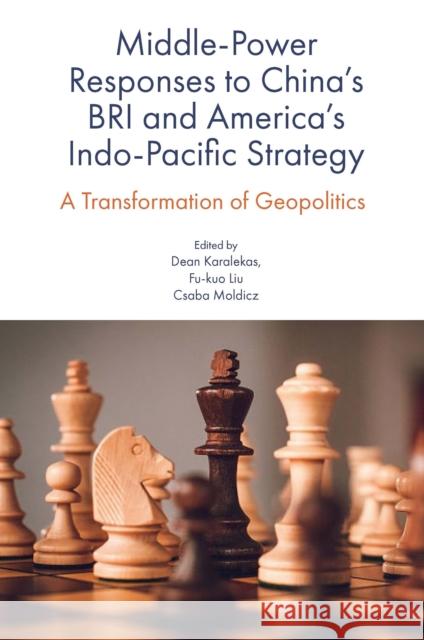Middle-Power Responses to China’s BRI and America’s Indo-Pacific Strategy: A Transformation of Geopolitics » książka
Middle-Power Responses to China’s BRI and America’s Indo-Pacific Strategy: A Transformation of Geopolitics
ISBN-13: 9781801170246 / Angielski / Twarda / 2022 / 232 str.
Middle-Power Responses to China’s BRI and America’s Indo-Pacific Strategy: A Transformation of Geopolitics
ISBN-13: 9781801170246 / Angielski / Twarda / 2022 / 232 str.
(netto: 360,33 VAT: 5%)
Najniższa cena z 30 dni: 376,02
ok. 30 dni roboczych
Dostawa w 2026 r.
Darmowa dostawa!
Asia is at a geopolitical crossroads. After China launched its ambitious Belt and Road Initiative (BRI) in 2013, Japan and the United States responded with the November 2017 promulgation of the Free and Open Indo-Pacific (FOIP) Strategy. Perhaps not surprisingly, these two initiatives share some common features, and two of these - their ambiguity and their competitiveness - seem to be crucial in the foreign policy evaluation process. Competition leads to ambiguity, which makes reactions, and responses in foreign policy more and more difficult. Middle-Power Responses to China’s BRI and America’s Indo-Pacific Strategy addresses that gap. Starting from the insight that neither the BRI nor the FOIP exists in isolation, and drawing on the knowledge that when either China or the United States sneezes, it is often the less powerful geopolitical players that catch the worst colds, the chapters gathered herein examine how the US-China geopolitical competition affects nations as diverse as Taiwan, Hungary, Kazakhstan, Kyrgyzstan, and the member states of ASEAN. These insights are provided by an international, multidisciplinary group of leading experts that include military flag officers, academic researchers, current and former government officials, and retired diplomats, all of whom contribute to a well-rounded, multifaceted view of the transformation that is currently taking place in the geopolitics of the Asia-Pacific.











